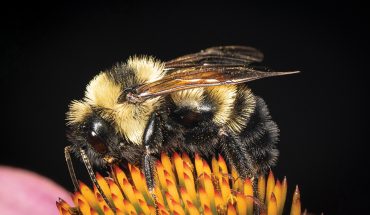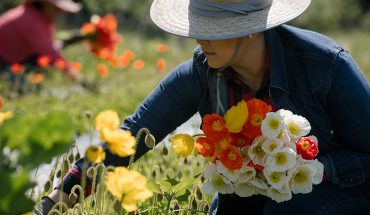by Tony Avent
illustration by Ippy Patterson
I first became enamored with Rohdea
japonica back around the time President Richard Nixon uttered that immortal line, “I am not a crook.” As I was always on the lookout for new plants that weren’t available in mainstream nurseries, Rohdea japonica was a perfect 1970s-era discovery.
A few years later, I first met a few more varieties on a visit to the JC Raulston Arboretum lath house, my go-to source to see new and rare plants. Having been a hosta collector for more than a decade at this point, I noticed (without much effort, given my overly vivid imagination), that rohdeas were like evergreen hostas, and there seemed to be enough different varieties to satisfy my collector’s urge. Why have one when you can have 100 different varieties?
The only problem was that many of the fancy rohdea cultivars still hadn’t made it to the United States. Fast-forward to today: We’ve managed to acquire more than 70 named varieties and dozens of our own un-named seedling selections.
Back when I first discovered the Rohdea japonica, its genus was part of the giant lily family that – I knew I was on to something – also included hostas and asparagus ferns. In the early 2000s, the asparagus and lily family suffered through an acrimonious taxonomic divorce, however, in which the asparagus family was awarded sole custody of the genus hosta, asparagus, and rohdea. So now it’s an asparagus.
Rohdea japonica has a wide native range, not only in the country for which it is named, but also in six Chinese provinces, where it resides on woodland slopes. Like its brother hosta, rohdea forms a ground-hugging rosette that offsets (or grows small plants at its base) each year, resulting in a larger and larger clump. A typical mature Rohdea japonica will reach about 20 inches tall by two feet wide.
Although rohdeas do flower, the flowers are held on short basal stems called peduncles, which are nestled in the base of the foliage and subsequently are rarely seen by anything other than a ground fly or occasional slug.
In early November, however, the pollinated flowers swell to create attractive, short, club-like green seed heads, which then start a coloration process that culminates around Christmas, when the fruit turns bright red. The color holds through most of the winter, creating beautiful photo opportunities when we have light snows.
The Japanese long ago realized the variable nature of rohdeas when grown from seed and began collecting dwarf, contorted, and variegated cultivars, which now number nearly 1,000. As early as the mid 1400s, Rohdea japonica was already being used as a foliage filler in Japanese floral arrangements.
In the United States, most gardeners opt to grow rohdeas in the ground, where they make fabulous evergreen clumps in the shady, tree-canopied plots known as woodland gardens, looking good long after most other plants have begun their winter hibernation. When Rohdea japonica was first introduced into commerce, it was thought to be quite tender to winter cold, but through trials, we have found them to be fine outdoors as far north as Zone 6 (north of Boston).
Although Rohdea japonica is legendary for its ability to tolerate dry shade, the growth rate is far faster in slightly moist soils. On the down side, it will never become a mainstream nursery plant since its production time is usually two to three years, and subsequently, the price it commands will keep it out of the big-box market.
Still, the easy-to-grow Rohdea japonica is certainly worth seeking out for a special place in a woodland garden.




